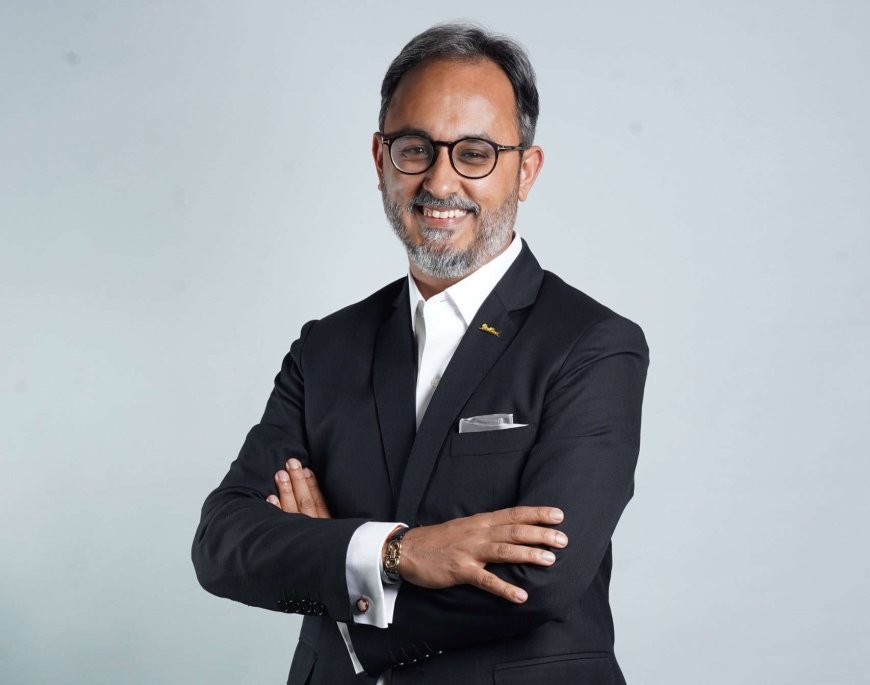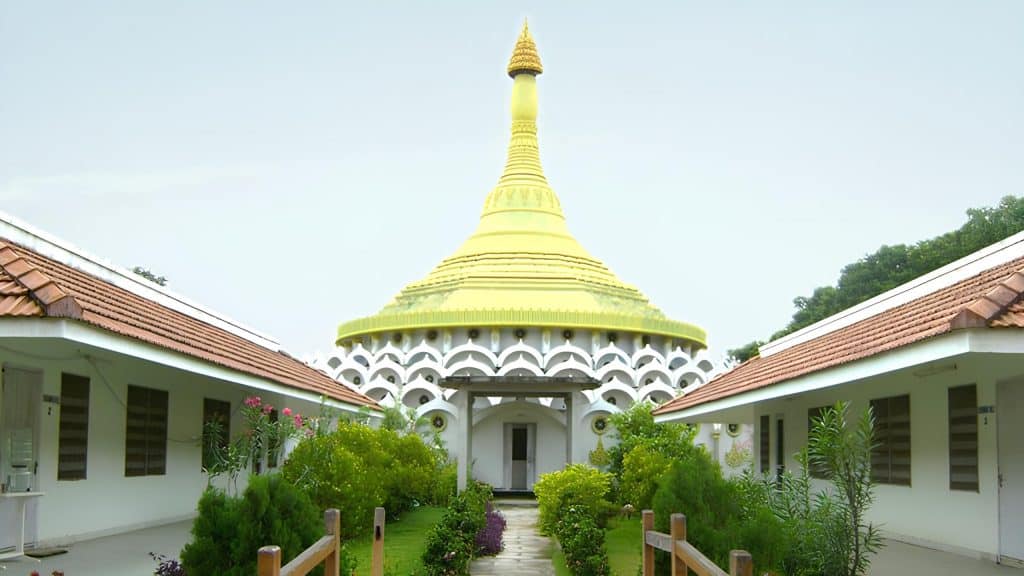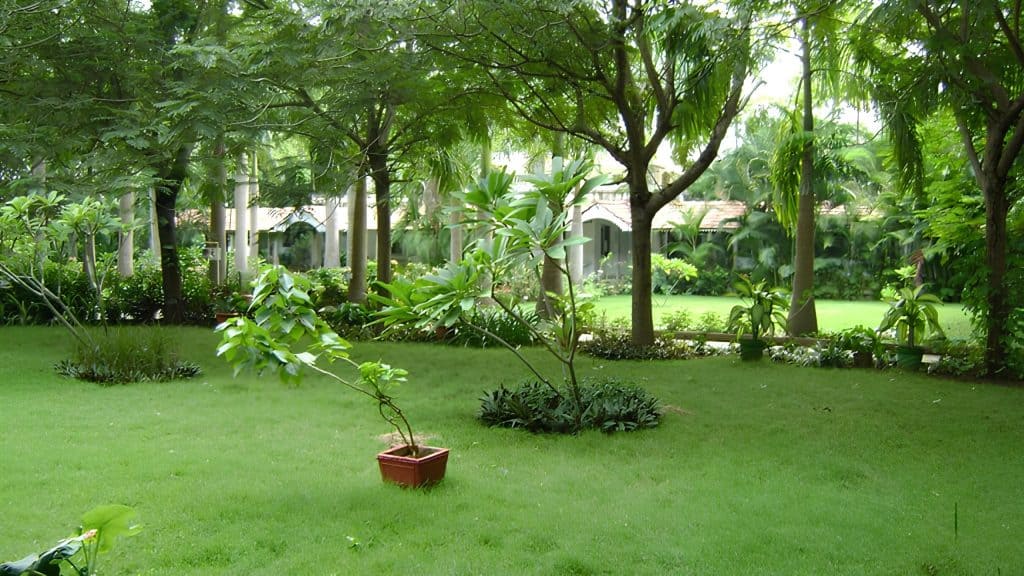The Calm Within The Storm: Nikhil Sharma’s Inner Journey through Vipassana meditation

Stillness isn’t weakness, it’s through Vipassana meditation that Nikhil Sharma, Managing Director & COO, South Asia, Radisson Hotel Group, finds his fiercest clarity.

He’s a powerhouse in Indian hospitality. Nikhil Sharma, Managing Director and COO, South Asia at Radisson Hotel Group, moves through boardrooms and balance sheets with effortless command. But beyond the titles and high-stakes decisions lies a story far more grounded and transformative.
What keeps a high-flyer like Nikhil Sharma centred while navigating the relentless pace of the industry? Spoiler: It’s not spreadsheets or strategy.
Today’s Traveller caught up with Nikhil Sharma not to talk shop, but to explore something deeper, his quiet revolution through Vipassana meditation. In this conversation, he opens up about how silence, stillness, and self-inquiry have shaped him, not just as a leader, but as a father and a human in constant evolution.
SEEING CLEARLY: THE VIPASSANA MEDITATION WAY
Vipassana, meaning “to see things as they really are”, isn’t just a meditation practice. It’s a full-on reset for the soul. Rooted in ancient India and revived over 2,500 years ago by Gautama Buddha (yes, the enlightenment guy), it’s one of the most timeless and transformative tools for inner clarity.
The Buddha practised it at 35, found profound peace, and spent the rest of his life sharing it, not as dogma, but as a path.

What makes Vipassana meditation so compelling in our hyper-distracted, always-on world? It’s non-sectarian, and refreshingly no-frills. There are no mantras, no incense, no chanting. Just you, your breath, and a radical kind of presence.
Practitioners scan their bodies with deep, neutral awareness, feeling sensations, letting go of attachments, and inching closer to mental stillness. And yes, it’s intense. Taught in silence over 10-day retreats around the globe (no phones, books, or talking—just 10 hours of meditation daily), it’s a full detox for the mind.
“It’s not religious,” Sharma notes, leaning in with the kind of clarity that only comes from lived experience. “Vipassana is spiritual. It doesn’t care what you believe, it cares how deeply you’re willing to look within.”
A JOURNEY BEGINS: DISCOVERING VIPASSANA
For Nikhil Sharma, the path to Vipassana didn’t begin with a dramatic epiphany—it started with a whisper. Mentions here and there in conversations, passing references in professional circles. But it wasn’t until he stumbled upon videos of Acharya S.N. Goenka—the modern torchbearer of the practice, that something clicked.
“I read about it, saw Goenka ji’s talks online, and something resonated. His clarity, the simplicity of the teachings, it felt like truth, unembellished,” he shares.

But Vipassana meditation isn’t something one stumbles into casually. Preparing for a 10-day silent vipassana meditation retreat requires both logistical planning and mental readiness.
“I mentally prepared myself for six months,” he says. “The first time I applied, the confirmation came too close to the date. I couldn’t rearrange my business schedule. So I waited and reapplied during a known down period and made it.”
What followed was an experience that tested every fibre of his being.
THE RETREAT: SILENCE, STILLNESS, AND SURRENDER
Held in a secluded centre, the Vipassana retreat begins with a powerful commitment—noble silence. No talking. No eye contact. No gestures. Nothing to pull you out of yourself.
Men and women are housed separately, and even within the same group, solitude is strictly observed.
Each participant gets a bare-bones private room, a bed, and a washroom, no frills. There’s no staff tending to the comforts; you do everything yourself. Laundry, cleaning, and washing your own utensils.
It’s a far cry from the curated luxury of hotel life.
“For hoteliers like us, used to a certain lifestyle, it’s a major reset,” Sharma says with a smile. “You eat a light vegetarian meal by 11:30 in the morning, and that’s your last meal for the day. Evenings are just tea or lemon water.”

Days begin in silence at 4:00 AM and roll into structured hours of meditation, all the way through to 9:00 PM. No phones, no books. Just structured stillness.
Goenka’s audio discourses provide the only form of guidance, equal parts philosophy, psychology, and gentle encouragement. On-site teachers are present for queries, but no conversation is allowed.
By Day 2, Sharma hit a wall.
“I was physically and mentally broken,” he admits. “I thought I could do it, but I wanted to leave. The mind starts playing games, making you believe something terrible is happening outside, that your family or work can’t manage without you.”
But somewhere between resistance and resolve, something shifted. “I told myself: one more day. And then another. Eventually, I finished the 10-day vipassana meditation. And it changed me.”
What began as a mental challenge became a deep unlearning. A reset not just of routine, but of perspective.
CLEANING THE MIND LIKE A HOUSE
Talking about his Vipassana meditation journey, Sharma drops a gem of an analogy: “It’s like moving into a dusty house. First, you clean the big debris. Then you clean again, and again, each time removing finer particles. Vipassana is like that. You clean your mind layer by layer. It’s not instant enlightenment. It’s a process.”
In the early days, he admits, it was brutal. But around Day 6 or 7, the internal chatter dials down, and the silence, once deafening, starts to feel like home.
He shares, “You begin to observe thoughts without clinging to them. That in itself is freeing.”
Since his first experience, Sharma has completed three courses, two 10-day sessions and a shorter 4-day retreat reserved for returning practitioners. Each time, he finds something new.
LEADERSHIP WITH PATIENCE AND PRESENCE
For Sharma, the biggest shift Vipassana brought wasn’t in his schedule, it was in his leadership style.
He says, “I’m far more patient now. When you’re leading large teams, it’s easy to lose your temper when things don’t align. But with meditation, you start recognising your own patterns. You reflect on your reactions.”
Has he gone soft? Not even close. He remarks, “Not at all. I’m still ambitious. I still want to grow, push boundaries. But now I pause. I listen. I act with more clarity.”
He believes that self-reflection is a leadership muscle too few cultivate. In a world that often glorifies hustle over headspace, Sharma’s all for bringing introspection to leadership.
He points out, “If you used to get angry for an hour a day, now you reflect and maybe it becomes 50 minutes, then 30. It’s about progress, not perfection.”
Still sharp, still driven, just with a calmer edge.
Interestingly, Sharma doesn’t advocate for Vipassana to be institutionalised in companies. “I don’t want to impose it,” he says. “Each person’s path is their own. My wife finds her peace in early morning gym workouts. Others might find it in music or yoga.”
However, Nikhil Sharma strongly believes that leaders, especially at senior levels, must find a discipline that grounds them. He shares, “Whether it’s Vipassana or something else, you need a practice that allows you to be still, so your actions can be deliberate.”
IN SEARCH OF BETTERMENT
As we wrap up, Sharma smiles thoughtfully. “I don’t think I’m religious. But I’m a seeker,” he says. “Whether I’m visiting a mosque in Kashmir, a gurudwara in Punjab, or the Dalai Lama in Dharamshala, I’m always searching for meaning, balance, purpose.”
And that search, rooted in reflection, not ritual, is what sets him apart.
For someone leading a global hospitality powerhouse in one of the world’s fastest-growing markets, it’s this inner compass that keeps him anchored.
“In the end,” he says, “we’re all striving to be better. Vipassana helped me start that process from the inside out.”
In a world obsessed with speed, Sharma offers a different blueprint: where stillness meets strategy, and leadership isn’t only about driving results, but about knowing when to breathe, listen, and grow.
This rare and intimate look into his journey reminds us that the strongest leaders are often the quietest seekers.
Read More: News






